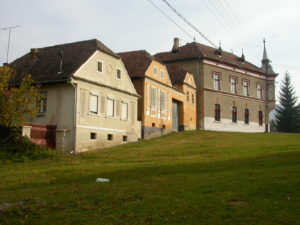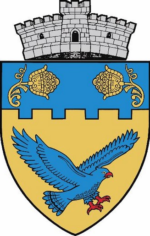Szászkézd

Szászkézd (Saschiz, Keisd) is a Saxon settlement in Transylvania, Romania. It is famous for its so-called peasant castle and its huge Gothic fortified church. It can be found 20 km southeast of Segesvár (Schäßburg, Sighisoara). You can read more about the Saxons here:
https://www.hungarianottomanwars.com/essays/who-were-the-german-saxons-in-transylvania/

Here is a video about the castle:
https://www.youtube.com/watch?v=y5WL6kbwOpw
The second part of Szászkézd’s name derives from the Hungarian Keszi tribe’s name while “Szász” stands for “Saxon”. The first inhabitants were Hungarian Székelys in 1161 who were re-settled later to Kézdiszék. The Saxons were invited to Szászkézd in 1231. As far as we know, the place was first mentioned in 1308 as “Kizd”.

The settlement became the center of Szászkézdszék Seat in 1337 and it was its headquarters until 1440. Szászkézd was first mentioned as a town in 1419. King Matthias Corvinus visited the town in 1467. According to the records, there were 209 burgers, 8 shepherds, 8 poor people, 2 mills, and one schoolmaster in the city in 1488. The Saxon Evangelic church was built between 1493 and 1497. The church was fortified in the 1520s but its outer walls were pulled down in the 19th century.

We know that the cobblers and the smiths had a guild in 1508 and 1535. The city boasted a hospital in 1570. The potters and the coopers had their guilds, too, in the first part of the 17th century. As it was a rather sizeable building, the Diet of Transylvania was held in the church in 1663. The tower of the church was originally built in the 15th century but it was similarly rebuilt in 1677 to the clock tower of Segesvár (Schäßburg, Sighisoara).

You can watch a video about the fortified church here:
https://www.youtube.com/watch?v=5bvTxZcCCoI
The town was permitted in 1577 to hold a three-day-long market once a year where traders were allowed to come from all over the country. There were 304 taxpayers in the city in 1593. As we have mentioned before, Prince Apafi Mihály held a Diet in the town in 1663.

Szászkézd had been rivaling Segesvár city for centuries, albeit it belonged to Segesvárszék since the second part of the 15th century. The Saxon inhabitants of Szászkézd rebelled against the Saxons of Segesvár (Schäßburg) in 1673 because of the disasters caused by nature and the plundering mercenaries. They were upset also because Segesvár didn’t respect their right to elect and have their own judge. The burghers’ delegation was imprisoned when they entered Segesvár with their demands. The conflict lasted until 1677 when troops were sent to Szászkézd to settle the mood of the people. The Diet of 1678 finally ruled in favor of Segesvár.

There is a 536-meter-high hill on the western part of the settlement where we can see the remains of a huge peasant castle. It was built after 1347 and was a refuge for the neighboring folks in times of peril, according to the habit of the German Saxon people.

It is circled by three walls which were 9-10 meters high and it was defended by six four-story-high towers. The rebel Hungarian kuruc troops of Prince Rákóczi Ferenc were able to occupy it in 1704 but the Imperials soon took it back.

You can watch a nice aerial video of the castle here:
https://www.youtube.com/watch?v=WI1BhOn1uOI
The castle was still intact at the beginning of the 20th century but as it is usual, the locals used its stones to build their houses.
There was a monastery next to the castle hill at the end of the Middle Ages.

Dear Readers, I can only make this content available through small donations or by selling my books or T-shirts.
If you like my writings, please feel free to support me with a coffee here:
You can check out my books on Amazon or Draft2Digital, they are available in hardcover, paperback, or ebook:
https://www.amazon.com/dp/198020490X or at https://books2read.com/b/boYd81

My work can also be followed and supported on Patreon: Become a Patron!http://Become a Patron!

https://hungarianottomanwars.myspreadshop.com/all




































